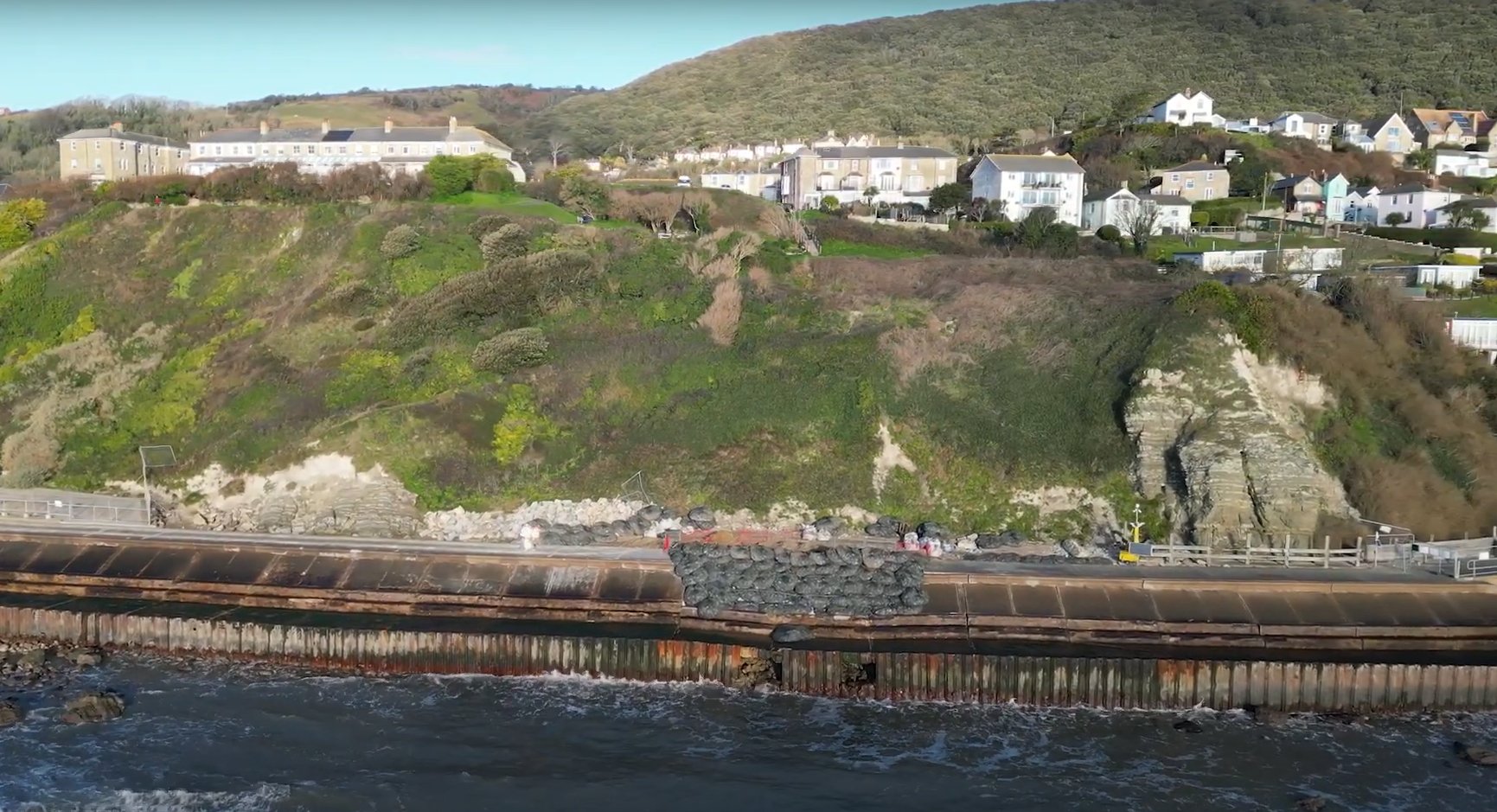The revetment from Ventnor Esplanade to Wheeler’s Bay will not be reopened to the public until the end of the year, it was revealed at a packed public meeting held this week, where drone footage (see below) showed the extent of the damage.
The Isle of Wight council’s Strategic Manager for the Environment, Natasha Dix, led the meeting in Ventnor to provide an update on the emergency works that have taken place so far and laid out what will be happening over the coming months. She was joined by colleagues from the Environment Agency, who are also working closely with the council on this and a longer-term coastal defences project that runs until 2031.
Moving onto ‘urgent works’
As explained at the meeting in November, once emergency stabilisation works were completed (which they now are), the next phase of works would be what’s termed ‘urgent works’.
It’s hoped those ‘urgent works’ will begin by the end of March at the latest, but it was explained that they could run for eight to ten months, taking us to the end of 2023.
Detailed engineering designs required
Natasha stressed the importance of a complete detailed engineering design, which is required to ensure the right work is carried out in a safe and secure manner, ensuring resilience of the repairs.
“I don’t want to end up back here in a year’s time telling you the seawall has failed again.”
Huge void under the revetment
Images shown during the presentation illustrated the seriousness of the seawall failure and the huge void under the revetment that usually sees hundreds of people walking, cycling, running along it every day.
The emergency works included adding huge bags of rocks (see below) to the area of the failure to prevent further destabilisation.
Surveys and inspections
Natasha explained that inspections and structural surveys are underway to develop the design of the ‘urgent works’, and these include ground penetrating Radar to assess voids, ground investigation boreholes and topographic surveys.

No access to construction site
It was stressed just how constrained the engineers will be by the amount of voiding under the apron of the revetment.
They will begin the urgent works at the western end of the seawall failure (by the skatepark) and complete each section individually before moving further east.
Inland diversions
For most of this year anyone wanting to get from Ventnor to Wheeler’s Bay or beyond will need to take the inland diversion as the construction site for rebuilding the seawall will not be accessible to the public.
Calls for better signage was listened to and Natasha explained she was working with the town council to ensure these would be more interesting than the usual yellow signs, and might include storytelling and points of interest.
Protecting the sewer and the toe of the landslide
The work that is carried out this year will not only ensure the passageway is reinstated from Ventnor to Bonchurch, but will also protect the all-important sewage line, as well as preventing the toe of the landslide from extending.
Public questions
During a Q&A at the end of the presentation, members of the public asked a wide variety of questions including; whether public access could be considered through the construction site (it had been and was not going to be possible), whether a bridge could be built over the construction site (had been considered, but not possible), whether holiday lets near the construction site would receive compensation (no) and how secure the funding for the future works were (it has been ring-fenced but there is always risk attached to Government funding).
We’ll update readers of when the next meeting will be held.
Drone footage
In the meantime, check out the drone footage below which shows the extent of the huge voids under the revetment.
Read the presentation
Embedded for your convenience, you can also view the council’s presentation below. It provides more insight into the issues facing the coastal team.





